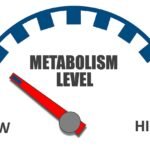Table of Contents
Find out how magnesium deficiency could be the reason behind your stress and sleep problems. Learn about symptoms, causes, and ways to boost your magnesium levels naturally.
Struggling with stress and sleepless nights? The culprit might be a hidden magnesium deficiency. Magnesium is a vital mineral that plays a crucial role in over 300 biochemical reactions in the body, including those related to stress management and sleep regulation.
Despite its importance, many people are deficient in magnesium, leading to symptoms like anxiety, muscle twitching, tight muscles, insomnia, and fatigue. In this article, we explore how magnesium deficiency can contribute to your stress and sleep problems, the factors that lead to this deficiency, and how to boost your magnesium levels through diet and supplementation. Discover the importance of magnesium-rich foods and effective supplements like magnesium glycinate to support your overall well-being.
Magnesium deficiency
Did you realize that it’s extremely difficult to reverse a magnesium deficiency ?
But I’m gonna tell you how to do it in this topic.
So my question is , how long does it take to solve a problem that you’re treating with the wrong solution ?
And the answer is you’ll never solve the problem if you use the wrong solution .
Most people don’t realize how common a magnesium deficiency is .
There’s been some reports that up to 88% of the general public are low in magnesium .
And what’s even more shocking than that is that it’s really hard to test for a magnesium deficiency .
There’s no gold standard .
You can do a questionnaire , and there’s another test that you can actually extract some tissue from the inside of your mouth and then send it to the lab .
But the problem with that test and the reason I’m not recommending is because I can’t get a hold of the lab that does this very specific specialized test .
So I’m not gonna put that in the link because they’re not gonna call you back .

So in this little chart , you can see that 60% of all your magnesium is in your bones .
39% is in your soft tissues , like your muscles , but only 1% of all the magnesium in your body is in your blood .
So this is why doing a blood test is not gonna give you a lot of information unless you’re very , very , very , very , very severe because even if you’re deficient in the blood , guess what’s gonna happen ?
You’re gonna borrow some of it from the bone or the soft tissues .
And in the bone in the soft tissues , most of that is not outside the cell .
It’s inside your cells .
It’s called intracellular calcium .
And so one of the principles that I use in health is I I use a principle out of this book called The Technology of War by Sun Tzu .
Now , of course , this book is about fighting wars , but you can apply it to anything .
And so Sun Tzu talks about cross referencing data to see if a situation or a problem exists where you can cross reference symptoms that are related to a magnesium deficiency .
Magnesium deficiency causes

You can also look at your foods to see how much magnesium is coming from your foods or not .
If you have inflammation in your gut , if you’re diabetic , if you have insulin resistance , if you consume a lot of sugar , also , if you take a lot of vitamin d , the requirement for magnesium goes up .
So if you’re not taking magnesium with vitamin D , you can actually end up having lower amounts of magnesium because your body’s using more of that magnesium for vitamin D absorption .
And also , if you’re on medications , let’s say you’re on a PPI , an antacid , or you’re taking an antibiotic or you’re on a diuretic .
All these factors when cross referenced can kind of indicate you might have a magnesium deficiency .
Magnesium deficiency symptoms
But now let’s cross reference this with potential indicators or symptoms you might have if you’re low on magnesium .
Tetani .
Let’s see if a little twitch underneath your left eye .
Are your muscles relaxed or are they tight ?

Do you have insomnia ?
Do you have a lot of anxiety ?
Do you have fatigue ?
Did you realize that you need magnesium just to make ATP , the energy currency of your body ?
Also , a magnesium deficiency can create , you know , things like nystigmus , which is like when your eyes kinda go back and forth like that , and migraines and kidney stones and especially something called pathogenic calcification .
What is that ?
That is calcification .
That’s calcium buildup in places that you shouldn’t have it .
Best sources of magnesium

So I’m just gonna run down the list of foods that are fairly high in magnesium compared to other foods .
And we’re gonna talk about the quantity of a 100 grams .
That’s 3 and a half ounces .
So at the top of the list , you have sea kelp .
3 and a half ounces of sea kelp is equivalent to 760 milligrams .
Now I’d like to see you eat 3 and a half ounces of sea kelp .
It’s probably not gonna happen .
What about almonds ?
That would give you about 490 milligrams .

Nutritional yeast is 231 milligrams .
Pecans , a 142 milligrams .
Leafy greens , roughly about a 100 milligrams of magnesium .
Dark chocolate is about a 165 milligrams .
Pumpkin seeds are 265 milligrams of magnesium .
But magnesium is also in meats and fish , but not as much as you might think .
So a 100 grams or 3 and a half ounces of meat or fish , you’re gonna get between 25 to 35 milligrams of magnesium .
And even if we look at the requirements of magnesium , it’s called the RDAs , that usually is between 300 and 420 milligrams per day on average .
But the average person only consumes 200 and 15 milligrams of magnesium per day .
People aren’t getting enough from the diet , not to mention the foods nowadays are grown in soil that has lower amounts of minerals , especially magnesium .
And it’s really 2 situations or actually 3 situations .
Number 1 , how do we get enough magnesium from the diet ?
Do we have to supplement ?
And 3 , how long does it take to really satisfy your deficiency ?
Oh , and by the way , all the information I’m talking about is in this book right here called The Miraculous Cure For and Prevention of All Diseases .
What doctors never learned ?
I’ll put this link down below .
It’s a really fascinating book based on a lot of different things related to magnesium and vitamin d , but all the data that I’m sharing today is based in that book .
How to increase magnesium levels

So if you’re deficient , you’re gonna have to not only beef up , no pun intended , your magnesium foods , but you’re also gonna have to supplement as well .
And the type of magnesium I’d recommend is magnesium glycinate , which actually helps , you know , stress , sleeping , etcetera .
And the amount of supplement I would recommend would be about 800 milligrams every single day .
So usually come in , like , 400 ish , maybe 300 milligrams per tablet .
Take a couple of those every day .
But here’s the thing .
How long is it actually gonna take to really fix a true deficiency ?
It could take up to a year or more to fix a chronic magnesium deficiency .
You have to realize that when you take magnesium from foods or a supplement , it doesn’t just go in storage .
A good majority of it will be washed out through the kidneys , but you might find your symptoms go away within weeks or months , but I wouldn’t stop there .
I would increase the amount over a longer period of time .
Then maybe after about a year of taking supplements , then maybe then you just maintain it with your diet .
But of course , make sure that you calculate how much magnesium is going into the body and then make sure at least it’s like 400 milligrams per day .
key points:
Magnesium deficiency can be caused by the following factors:
- Diet
- Gut inflammation
- Diabetes
- Insulin resistance
- Excessive sugar consumption
- Vitamin D without magnesium
- Medications (antibiotics, PPIs, antacids, diuretics)
Symptoms of magnesium deficiency can include:
- Tetany
- Tight muscles
- Insomnia (sleep problems)
- Anxiety
- Fatigue
- Nystagmus
- Migraines
- Kidney stones
You need magnesium to make ATP, the “energy currency” of the body. Magnesium deficiency can also lead to calcium buildup.
Here are some of the foods that have the most magnesium per 100 grams/3.5 ounces:
- Sea kelp: 760 mg of magnesium
- Almonds: 490 mg of magnesium
- Nutritional yeast: 231 mg of magnesium
- Pecans: 142 mg of magnesium
- Leafy greens: 100 mg of magnesium
- Dark chocolate: 165 mg of magnesium
- Pumpkin seeds: 265 mg of magnesium
- Meat and fish: 25 to 35 mg of magnesium
The RDA for magnesium is 300 to 420 mg, and the average person only consumes 215 mg. If you have magnesium deficiency, increase your intake of magnesium-rich foods and supplement with 800 mg of magnesium glycinate.
It can take up to a year to fix a chronic magnesium deficiency, but you might find that your low magnesium symptoms go away in a few weeks or months. After you’ve increased magnesium levels with supplements, you can maintain it with your diet.
Always ensure you consume at least 400 mg of magnesium daily.
DATA:
https://www.ncbi.nlm.nih.gov/pmc/articles/PMC5794996
https://www.nature.com/articles/s42003-023-05247-6
https://www.ahajournals.org/doi/full/10.1161/atvbaha.117.309182
FAQ:
Can magnesium deficiency be reversed?
Yes, magnesium deficiency can be reversed with appropriate dietary changes and supplements. Increasing magnesium-rich foods like leafy greens, nuts, seeds, and whole grains, along with taking oral magnesium supplements as recommended by a healthcare provider, can help restore normal levels.
How long does it take to reverse magnesium deficiency?
The time it takes to reverse magnesium deficiency varies depending on the severity and the treatment plan. Typically, it can take several weeks to a few months of consistent dietary changes and supplementation to restore normal magnesium levels. Always consult with a healthcare provider for a personalized treatment plan.
Why does my body have a hard time absorbing magnesium?
Several factors can affect magnesium absorption, including gastrointestinal disorders like Crohn’s disease or celiac disease, medications such as proton pump inhibitors (PPIs) and diuretics, and excessive alcohol consumption. Aging and certain genetic conditions can also impair magnesium absorption.
What does a severe magnesium deficiency feel like?
Severe magnesium deficiency can cause intense symptoms such as muscle cramps, severe fatigue, abnormal heart rhythms, seizures, numbness and tingling, and personality changes like anxiety and depression. If you experience these symptoms, seek medical attention immediately.
11 warning signs of magnesium deficiency
- Muscle cramps
- Fatigue
- Weakness
- Nausea and vomiting
- Loss of appetite
- Numbness and tingling
- Abnormal heart rhythms
- Personality changes
- Seizures
- Tremors
- Insomnia
Can low magnesium kill you?
Severe magnesium deficiency can be life-threatening. It can lead to serious health issues such as heart arrhythmias, seizures, and respiratory failure. If you suspect you have a severe magnesium deficiency, seek medical attention immediately.
Weird magnesium deficiency symptoms
Unusual symptoms of magnesium deficiency can include tingling or numbness, personality changes, irregular heartbeats, muscle spasms, restless leg syndrome, insomnia, and eye twitches.
Causes of low magnesium and potassium
Low magnesium and potassium levels can be caused by factors such as poor dietary intake, chronic diarrhea, excessive alcohol consumption, certain medications (diuretics, antibiotics), and medical conditions like diabetes, kidney disease, and gastrointestinal disorders.
Magnesium deficiency symptoms in females
Women may experience symptoms of magnesium deficiency such as menstrual cramps, hormonal imbalances, migraines, fatigue, mood swings, muscle cramps, insomnia, and anxiety.
Side effects of low potassium and magnesium
Low potassium and magnesium levels can lead to symptoms such as muscle cramps, fatigue, weakness, irregular heartbeats, digestive issues, numbness and tingling, and severe cases can cause cardiac arrest or respiratory failure.
How to test for magnesium deficiency at home
At-home testing for magnesium deficiency typically involves blood spot tests or urine test kits available online or at pharmacies. These kits can be used to collect a sample that is then sent to a lab for analysis. Always follow up with a healthcare provider for comprehensive evaluation and diagnosis.
How to treat low magnesium
Treatment for low magnesium includes consuming magnesium-rich foods like leafy greens, nuts, seeds, and whole grains. Oral magnesium supplements may also be recommended by a healthcare provider. In severe cases, intravenous magnesium might be necessary. Always consult with a healthcare provider for a personalized treatment plan.




